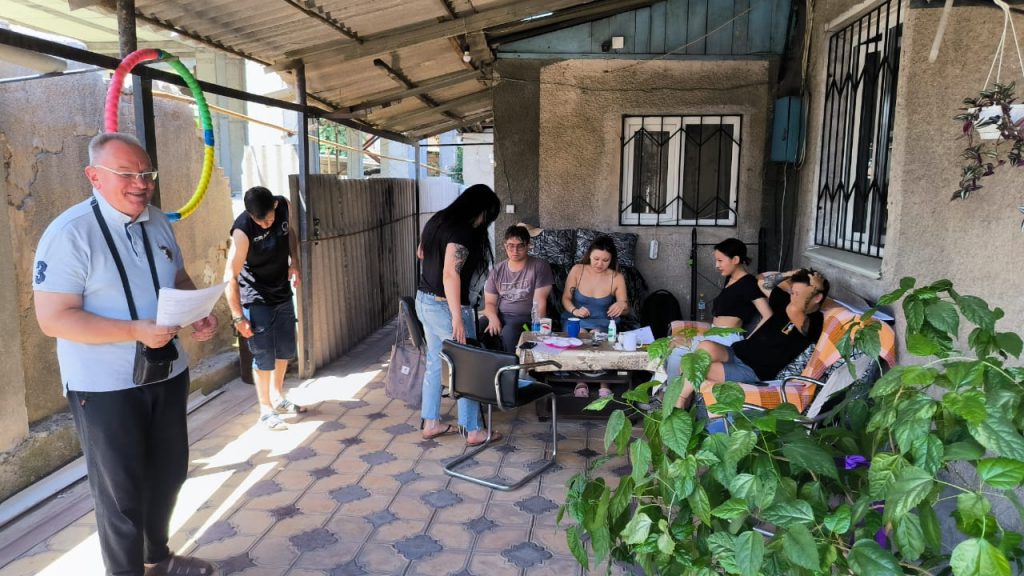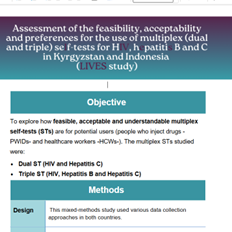
Objective: To explore how feasible, acceptable, and understandable multiplex self-tests (STs) for HIV and Hepatitis C (dual ST) and for HIV, Hepatitis B and Hepatitis C (triple ST) are for the target users.

Methods: This mixed-methods study used various data collection approaches:
- Focus group discussions with people who inject drugs (PWIDs) and healthcare workers (HCWs), as well as one-on-one interviews with national stakeholders, to gather overall opinions on the acceptability of the multiplex self-test. In Kyrgyzstan, 56 participants were involved: 27 PWIDs (including 11 women), 24 HCWs (11 women) and 5 stakeholders (2 women).
- One-on-one cognitive interviews with PWIDs and HCWs to get feedback on the instructions for using the multiplex self-test. In Kyrgyzstan a total of 60 participants were involved: 30 PWIDs (including 9 women) and 30 HCWs (including 10 women).
- Surveys to assess how participants interpret the results of 4 to 5 different multiplex self-tests with pre-set results. Participants did not test themselves. They were provided with “mock ST kits” with different results (i.e.: HIV, HBV positive; HIV positive, HBV negative; all negative etc.). In Kyrgyzstan a total of 222 participants were involved: 118 PWIDs (including 31 women) and 104 HCWs (including 51 women).

Key findings in Kyrgyzstan:
- ST was perceived as a convenient and private tool to be used. There was interest in Multiplex ST that could be used to screen several infections.
- Video instructions could be used to disseminate information about how to test, interpret results and to provide specific actions on what to do after results, including updated local guidelines.
- Most participants correctly interpreted all STs. Dual STs were well interpreted 90% of the times by PWIDs and HCWs. Triple STs were well interpreted more than 88% of times by PWIDs and 96% of times by HCWs.
- Multiplex ST results worse interpreted where the faint positive lines and invalid results. IFUs need to be enhanced to better explain these results.

Acknowledgments:
We would like to acknowledge all study participants, country partners (GLORI, Attika), donors: NIH via CRDF, Dr Aibek Bekbolotov of the Republican Center for Control of Bloodborne Viral Hepatitis and Human Immunodeficiency Virus under the Ministry of Health of the Kyrgyz Republic and FIND colleagues: Sonjelle Shilton, Elena Marbán, Olga Denisiuk, Mikaela Watson, Maia Japaridze and Laureanne Putallaz for their generous support and sharing scientific and practical ideas.
You can download this overview as a .pdf following the link below:


















